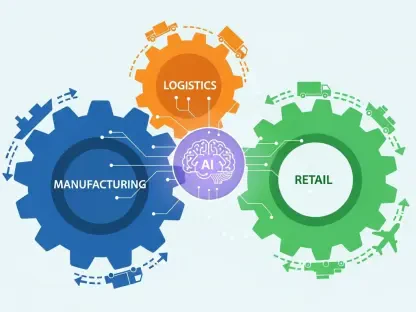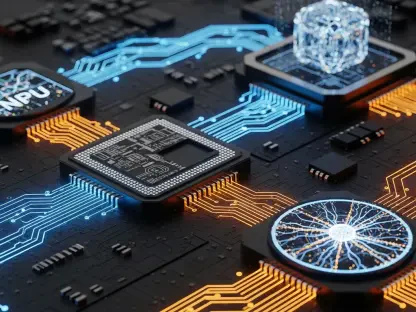The development of AI chips has entered a transformative phase where demands for edge processing, security, and energy conservation have captured industry attention. Amid this evolution, an innovative AI chip designed by Prof. Hussam Amrouch’s research group at the Technical University of Munich presents a cutting-edge solution to meet these requirements. This chip stands out for its ability to operate independently of cloud servers and internet connectivity, addressing concerns over data security and environmental impact. The chip employs neuromorphic architecture, inspired by human brain models, enabling on-the-spot calculations. It marks a significant shift away from conventional chips, which heavily depend on cloud-based processing and substantial energy usage.
Neuromorphic Architecture Advancements
At the heart of this AI chip’s uniqueness is its neuromorphic architecture, which mimics the human brain’s ability to perform calculations in real-time without requiring large datasets. Unlike traditional AI systems that rely extensively on deep learning and vast databases, this chip employs hyperdimensional computing, integrating computing and memory units. This methodology allows the chip to recognize patterns using inferred insights akin to human learning, circumventing the need for extensive training data. By enabling specialized, energy-efficient applications, this system opens new possibilities for on-device processing tasks, such as health data analysis and drone navigation, effectively minimizing carbon footprints and enhancing data security.
The AI chip’s energy efficiency is particularly noteworthy, consuming a mere 24 microjoules for training tasks, a “record value” as highlighted by Prof. Amrouch. This achievement is attributed to the chip’s modern architecture and algorithm specialization, reflecting a departure from energy-intensive traditional processes. In practical applications, this advancement signifies a reduction in carbon emissions and enhances the device’s capability in fulfilling specific needs without reliance on cloud systems. Moreover, this breakthrough aligns with broader industry trends favoring decentralized processing, where the focus is shifting toward systems that guarantee data safety and environmental sustainability.
Emphasis on Secure Processing
A defining characteristic of this chip is its capability to keep sensitive data within the device, eliminating risks associated with data breaches and cloud transfers. This security-centric approach provides a distinct advantage in applications needing robust data protection, such as personal health monitoring or navigation systems. The AI chip exemplifies a movement towards decentralized AI processing, where dependency on cloud platforms is diminished, paving the way for secure and efficient AI solutions. Although not as densely packed with transistors as some leading competitors, its advantages lie in the efficient and secure management of critical data, reducing cybersecurity threats.
The development of this AI chip underscores an overarching shift toward decentralized AI technologies, catering to market demands for efficiency, security, and environmental consciousness. As data privacy concerns grow, technologies like this emerge to safeguard personal information against cyber threats while delivering efficient processing capabilities. This paradigm signals a wider trend in tech sectors leaning toward hardware ownership, suggesting that the future of AI may reside increasingly in the hands of those who directly control their technology rather than relying on distributed infrastructures.
Future Pathways and Market Impact
AI chip development is undergoing a transformative shift, driven by factors like edge processing, enhanced security, and energy conservation, garnering significant industry interest. In this context, a remarkable AI chip crafted by Prof. Hussam Amrouch’s research team at the Technical University of Munich provides an innovative answer to these evolving demands. What sets this chip apart is its capability to function without reliance on cloud servers or internet connections, tackling data security and environmental concerns head-on. The chip uses neuromorphic architecture, inspired by the human brain’s design, to enable immediate, on-site computations. This represents a crucial departure from traditional chips that are dependent on cloud-based processing and consume substantial energy. As industries strive for more efficient and sustainable solutions, such advancements may redefine the future of AI technology, offering a new level of autonomy and reduced energy consumption in real-world applications.









